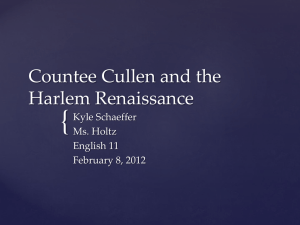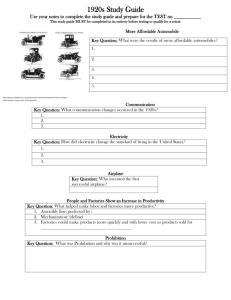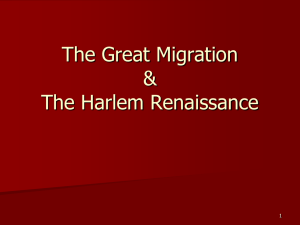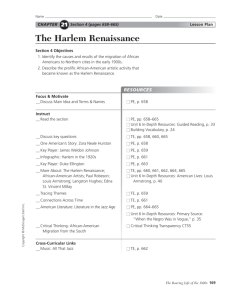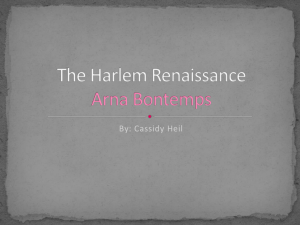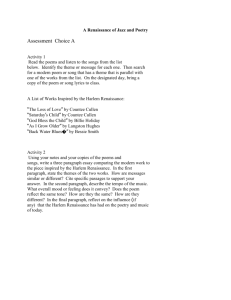UNIT - TheFacultyLounge
advertisement
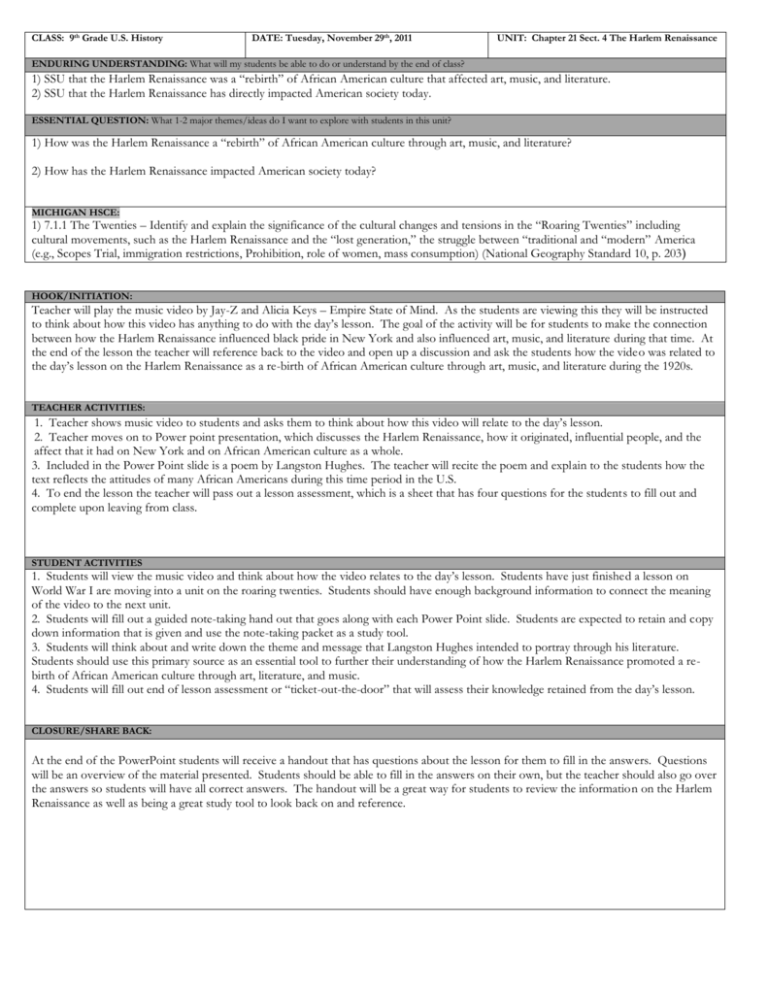
CLASS: 9th Grade U.S. History DATE: Tuesday, November 29th, 2011 UNIT: Chapter 21 Sect. 4 The Harlem Renaissance ENDURING UNDERSTANDING: What will my students be able to do or understand by the end of class? 1) SSU that the Harlem Renaissance was a “rebirth” of African American culture that affected art, music, and literature. 2) SSU that the Harlem Renaissance has directly impacted American society today. ESSENTIAL QUESTION: What 1-2 major themes/ideas do I want to explore with students in this unit? 1) How was the Harlem Renaissance a “rebirth” of African American culture through art, music, and literature? 2) How has the Harlem Renaissance impacted American society today? MICHIGAN HSCE: 1) 7.1.1 The Twenties – Identify and explain the significance of the cultural changes and tensions in the “Roaring Twenties” including cultural movements, such as the Harlem Renaissance and the “lost generation,” the struggle between “traditional and “modern” America (e.g., Scopes Trial, immigration restrictions, Prohibition, role of women, mass consumption) (National Geography Standard 10, p. 203) HOOK/INITIATION: Teacher will play the music video by Jay-Z and Alicia Keys – Empire State of Mind. As the students are viewing this they will be instructed to think about how this video has anything to do with the day’s lesson. The goal of the activity will be for students to make the connection between how the Harlem Renaissance influenced black pride in New York and also influenced art, music, and literature during that time. At the end of the lesson the teacher will reference back to the video and open up a discussion and ask the students how the video was related to the day’s lesson on the Harlem Renaissance as a re-birth of African American culture through art, music, and literature during the 1920s. TEACHER ACTIVITIES: 1. Teacher shows music video to students and asks them to think about how this video will relate to the day’s lesson. 2. Teacher moves on to Power point presentation, which discusses the Harlem Renaissance, how it originated, influential people, and the affect that it had on New York and on African American culture as a whole. 3. Included in the Power Point slide is a poem by Langston Hughes. The teacher will recite the poem and explain to the students how the text reflects the attitudes of many African Americans during this time period in the U.S. 4. To end the lesson the teacher will pass out a lesson assessment, which is a sheet that has four questions for the students to fill out and complete upon leaving from class. STUDENT ACTIVITIES 1. Students will view the music video and think about how the video relates to the day’s lesson. Students have just finished a lesson on World War I are moving into a unit on the roaring twenties. Students should have enough background information to connect the meaning of the video to the next unit. 2. Students will fill out a guided note-taking hand out that goes along with each Power Point slide. Students are expected to retain and copy down information that is given and use the note-taking packet as a study tool. 3. Students will think about and write down the theme and message that Langston Hughes intended to portray through his literature. Students should use this primary source as an essential tool to further their understanding of how the Harlem Renaissance promoted a rebirth of African American culture through art, literature, and music. 4. Students will fill out end of lesson assessment or “ticket-out-the-door” that will assess their knowledge retained from the day’s lesson. CLOSURE/SHARE BACK: At the end of the PowerPoint students will receive a handout that has questions about the lesson for them to fill in the answers. Questions will be an overview of the material presented. Students should be able to fill in the answers on their own, but the teacher should also go over the answers so students will have all correct answers. The handout will be a great way for students to review the information on the Harlem Renaissance as well as being a great study tool to look back on and reference.

